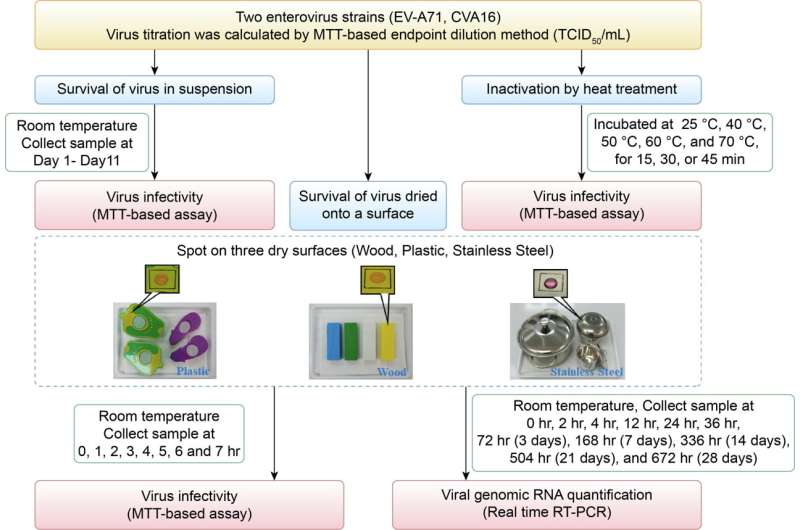This article has been reviewed according to Science X's editorial process and policies. Editors have highlighted the following attributes while ensuring the content's credibility:
fact-checked
proofread
Heat inactivation successful in controlling enteroviruses on surfaces, finds study

Hand, foot, and mouth disease (HFMD) is a contagious disease that mainly affects young children in the Asia–Pacific region. The viral transmission can occur through direct contact with nose and throat secretions, surfaces, fomites and the environment. Moreover, children's school toys may serve an important role in HFMD surface-to-hand transmission. Heat inactivation can be an alternative to control HFMD transmission at schools.
Stability and heat inactivation of enteroviruses on different surfaces have been investigated in previous studies. However, studies regarding entervirus-A71 (EV-A71) and coxsackievirus A16 (CVA16) on children's school toy surfaces have been rarely reported.
In a new study published in Biosafety and Health, the authors showed that the infectivity of EV-A71 and CVA16 declined within a few hours on all three surfaces, whereas the viral RNA could be detected for up to 28 days. In both assays, viral stability was higher on wood than on the other surfaces. Meanwhile, heat inactivation at 60°C for 15 min, which can be repeatable without damaging toys, was sufficient to completely inactivate both enterovirus serotypes.
The results of the study clearly demonstrated the prolonged persistence of enteroviruses on commonly encountered surfaces, highlighting the potential of indirect spread of these viruses among children. The heat inactivation is an applicable way for controlling the spread of pathogens in school environments, including complimented disinfection programs which normally required detergents and water.
More information: Pichamon Sittikul et al, Stability and infectivity of enteroviruses on dry Surfaces: Potential for indirect transmission control, Biosafety and Health (2023). DOI: 10.1016/j.bsheal.2023.07.001




















